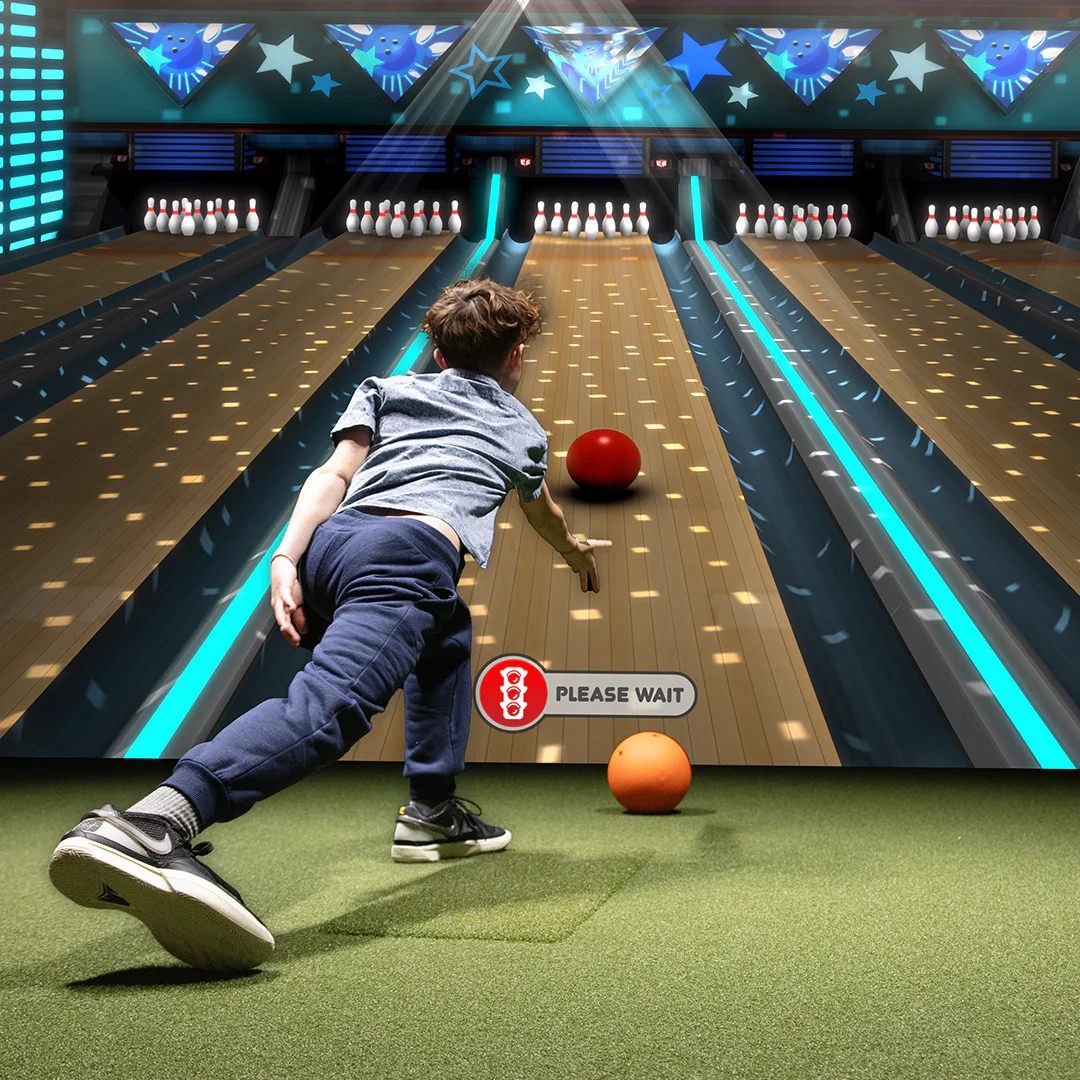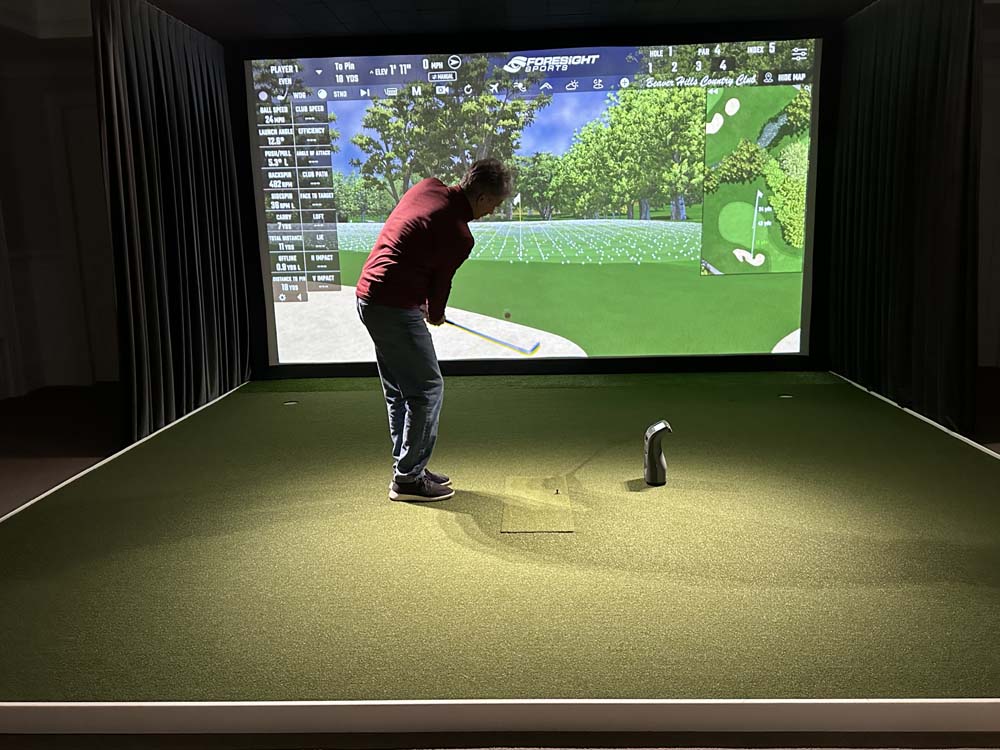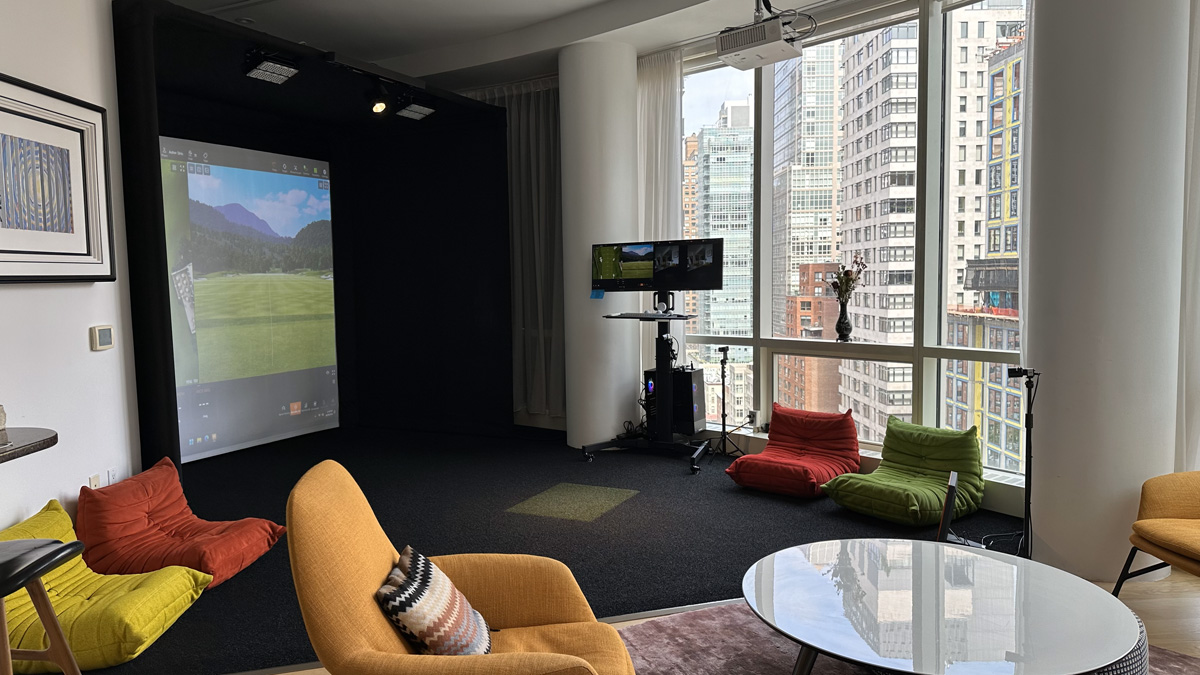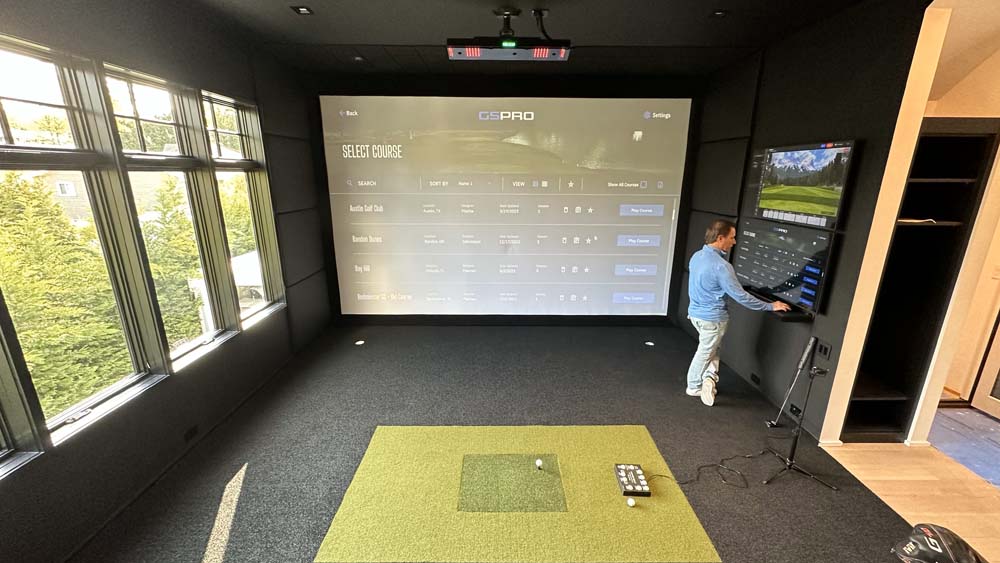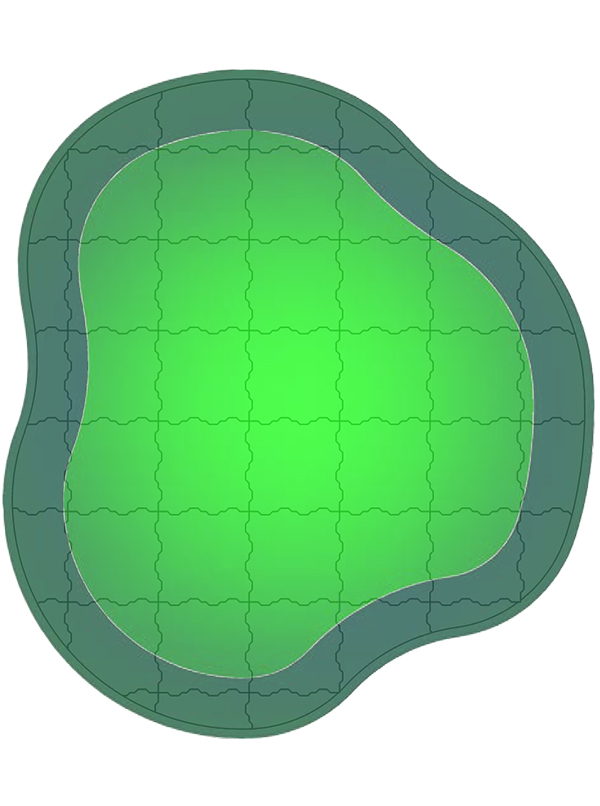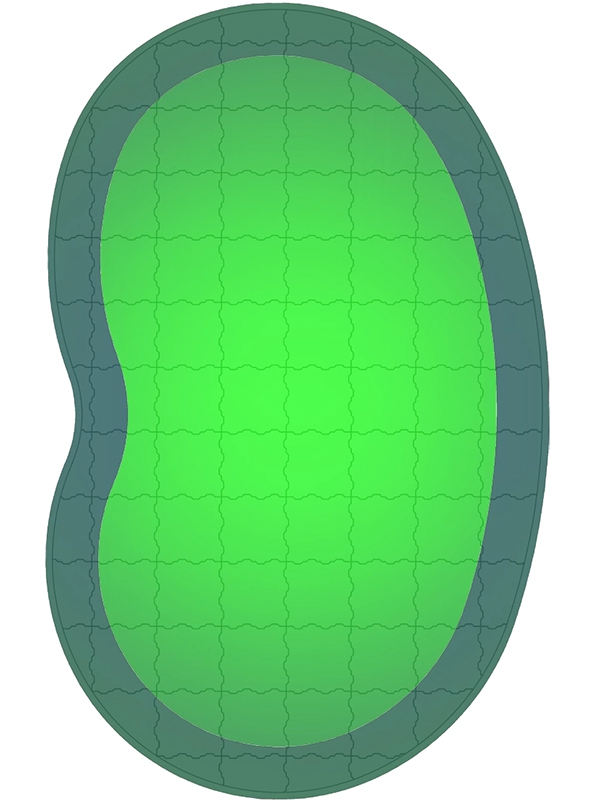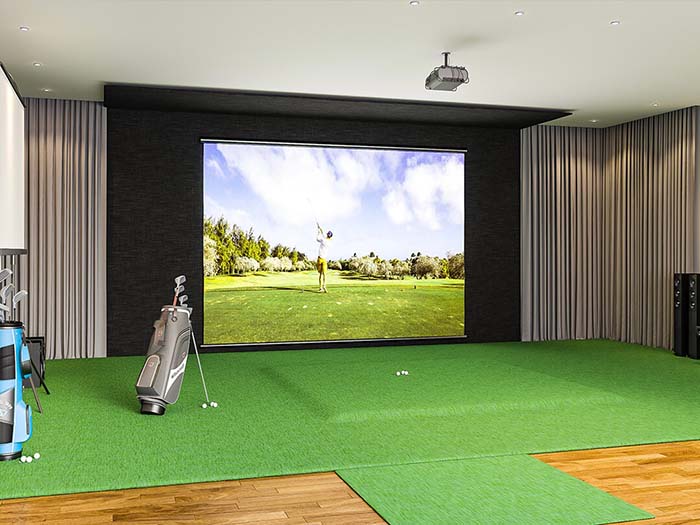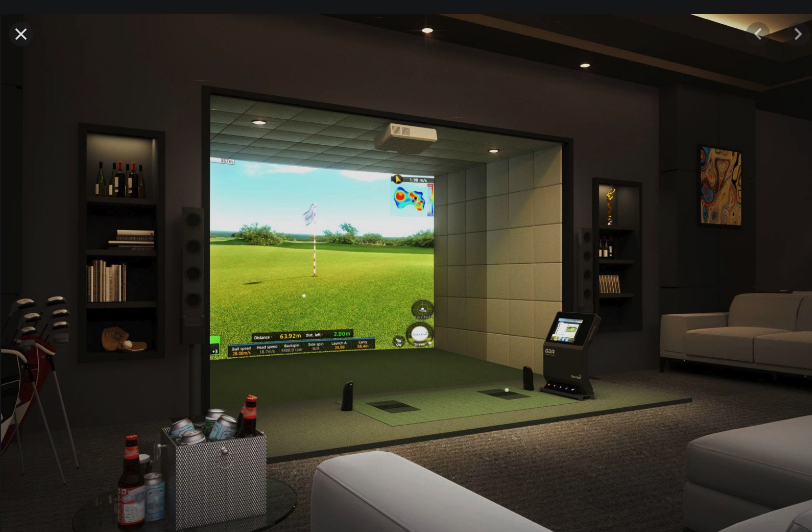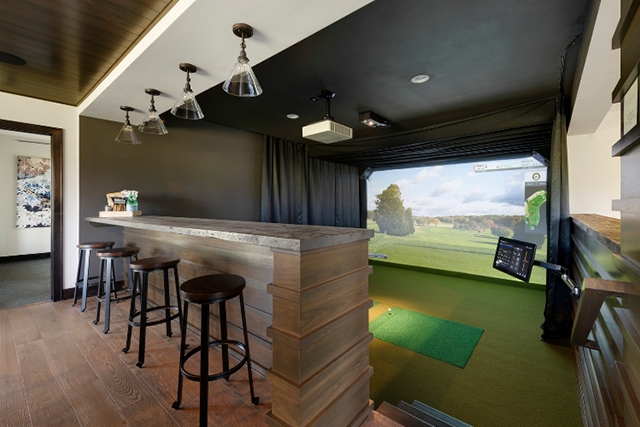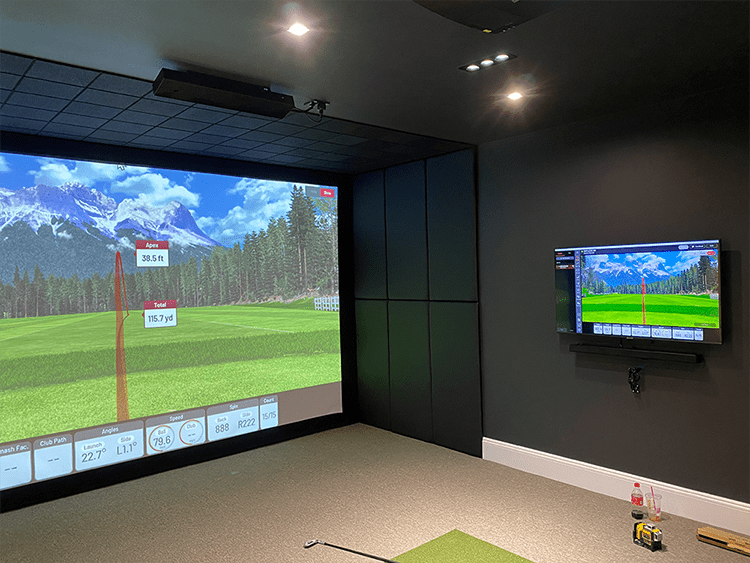Golf Simulator Blog
Free tips & advice for your home golf simulator

The History of Golf Simulator Technology
Golf has been a popular sport for centuries, with players testing their skills on courses around the world. However, for many golfers, the sport has been limited by factors such as weather, time constraints, and access to courses. Fortunately, modern technology has provided a solution: the home golf simulator. In this blog, we’ll take a closer look at the history of golf simulator technology, from its early beginnings to the advanced systems we use today.
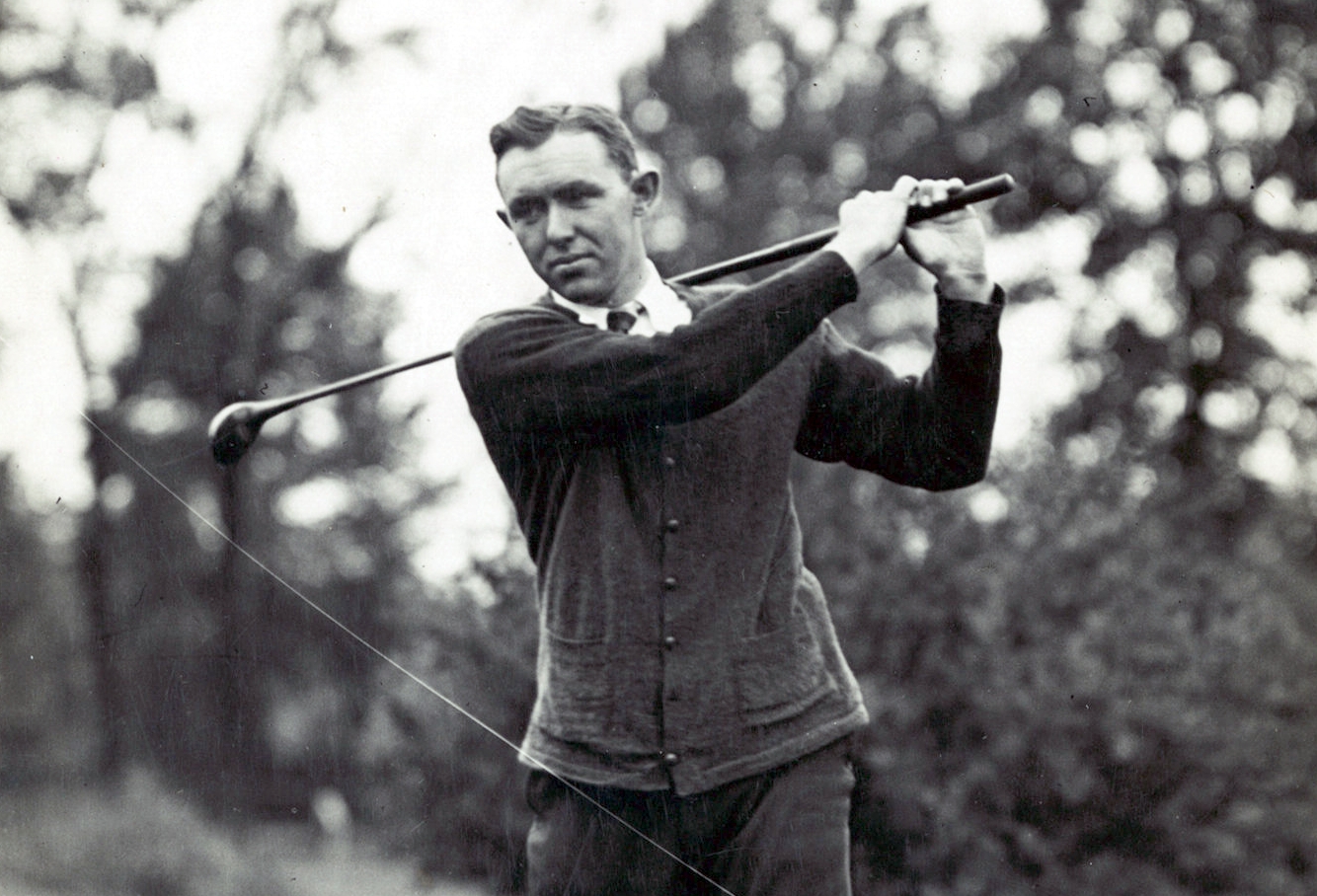
Early Attempts at Golf Simulators
The concept of a golf simulator can be traced back to the early 20th century, when inventors began experimenting with ways to recreate the golfing experience indoors. One of the earliest examples was the “In-Ball” machine, developed in the 1920s by the Automatic Industries Company. This machine featured a screen on which golfers could view a virtual course, and a ball that would roll along a series of sensors to determine its path and distance.
However, early golf simulators were limited by the technology of the time. Screens were small and low-resolution, and tracking sensors were often inaccurate. As a result, these early simulators were not widely adopted by golfers or used in commercial settings.
The Rise of Computer Technology
It wasn’t until the advent of computer technology in the 1980s and 1990s that golf simulators began to gain popularity. With the ability to create more advanced graphics and tracking systems, companies such as AboutGolf and ProTee began to develop golf simulator technology that was more accurate and realistic.
These early simulators featured screens that projected high-resolution images of golf courses, as well as sensors and cameras that tracked the movement of the ball and club. Some also included advanced features such as adjustable slopes and wind conditions, allowing players to simulate a range of course conditions.
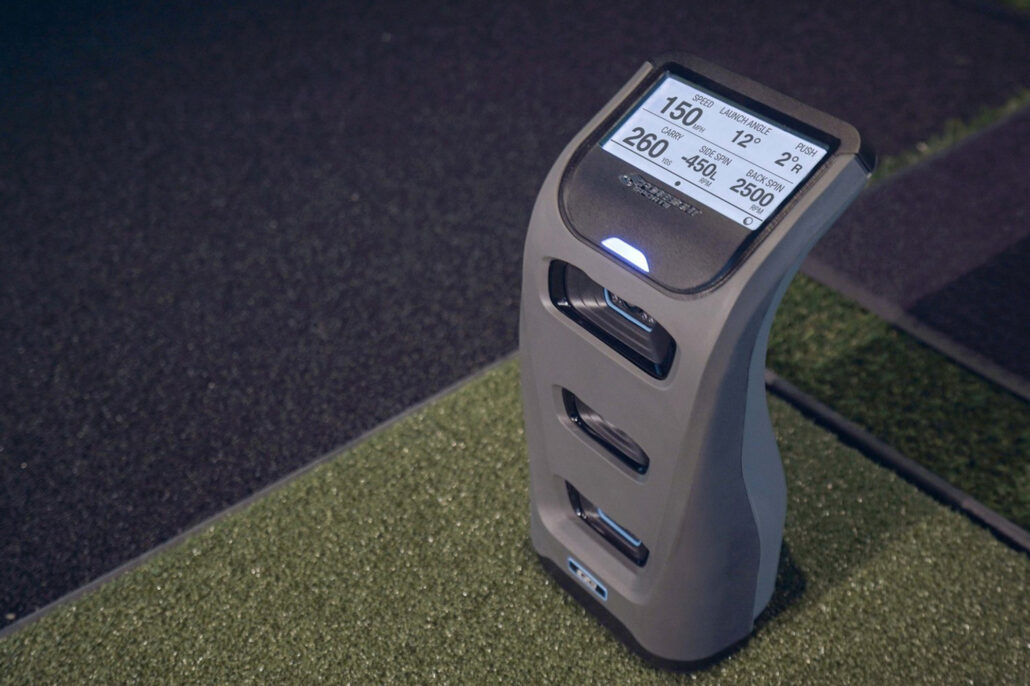
Commercial Success of the Golf Simulator
As the technology improved, golf simulators began to gain wider acceptance among both amateur and professional golfers. In addition to being used for practice and training, commercial golf simulators were set up at places like golf courses, driving ranges, and indoor entertainment centers.
Today, golf simulators are more advanced than ever, featuring high-definition screens, 3D graphics, and sophisticated tracking systems that can measure the speed, trajectory, and spin of the ball. Some also include advanced swing analysis tools and custom club fittings, allowing golfers to fine-tune their game to an unprecedented degree.
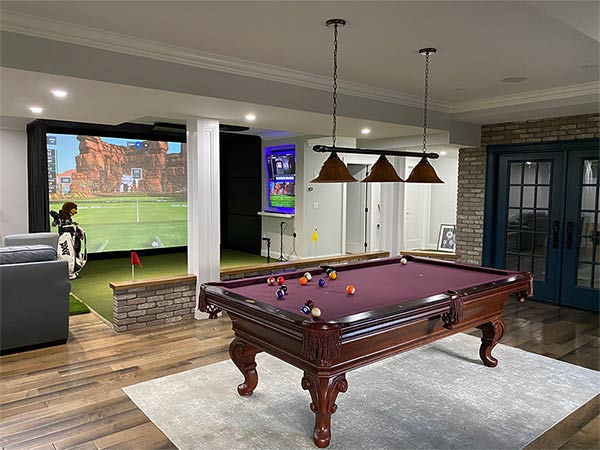
The Future of Golf Simulator Technology
As golf simulator technology continues to evolve, it’s clear that it will play an increasingly important role in the sport. From providing year-round access to courses to helping golfers of all skill levels improve their game, simulators offer a range of benefits that are hard to ignore.
Some of the latest innovations in golf simulator technology include virtual reality systems that allow golfers to immerse themselves in a fully-realized virtual course, and cloud-based analytics tools that provide real-time feedback and coaching. With these and other advances, it’s clear that the future of golf simulators is bright, and that they will continue to transform the way we play and enjoy the game.
How accurate are golf simulators?
One common question that many golfers have about simulators is how accurate they are compared to real-life golfing. While the answer can vary depending on the specific technology and setup of the simulator, most modern golf simulators are highly accurate and can provide a realistic golfing experience.
The accuracy of a golf simulator depends on several factors:
- Quality of the tracking sensors
- Resolution of the screen or projection
- Computer software
Some high-end simulators use multiple cameras or radar sensors to track the movement of the ball and club, while others rely on simpler infrared sensors or optical tracking.
In general, the most accurate golf simulators are those that use high-quality sensors and software to precisely track the movement of the ball and club. These systems can measure a range of factors, including ball speed, spin rate, launch angle, and trajectory, and can provide detailed feedback to help golfers improve their swing.
It’s worth noting, however, that no simulator can perfectly replicate the experience of playing on a real golf course. Factors such as wind, weather conditions, and terrain can all have an impact on a golfer’s performance, and these are difficult to recreate in a simulated environment. Additionally, some golfers may find that the feel of hitting a ball on a simulator is different than hitting a real ball on a grassy course.
Despite these limitations, most golfers find that simulators are highly effective tools for practicing their swing and improving their game. Whether used for solo practice or as part of a group outing, simulators offer a convenient and cost-effective way to play golf year-round and in any weather conditions. With the continued advancements in technology, it’s likely that golf simulators will only become more accurate and realistic in the years to come.
Hire a professional golf simulator company
Let us handle the hard work for you. Our team specializes in golf simulator design and installation, so we can custom-build a simulator for your space. Don’t lift a finger and enjoy a brand new home golf simulator setup.
Schedule a free consultation with our expert team to learn more about how we can help.


